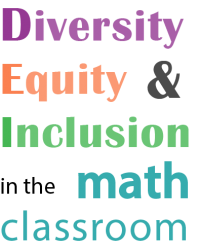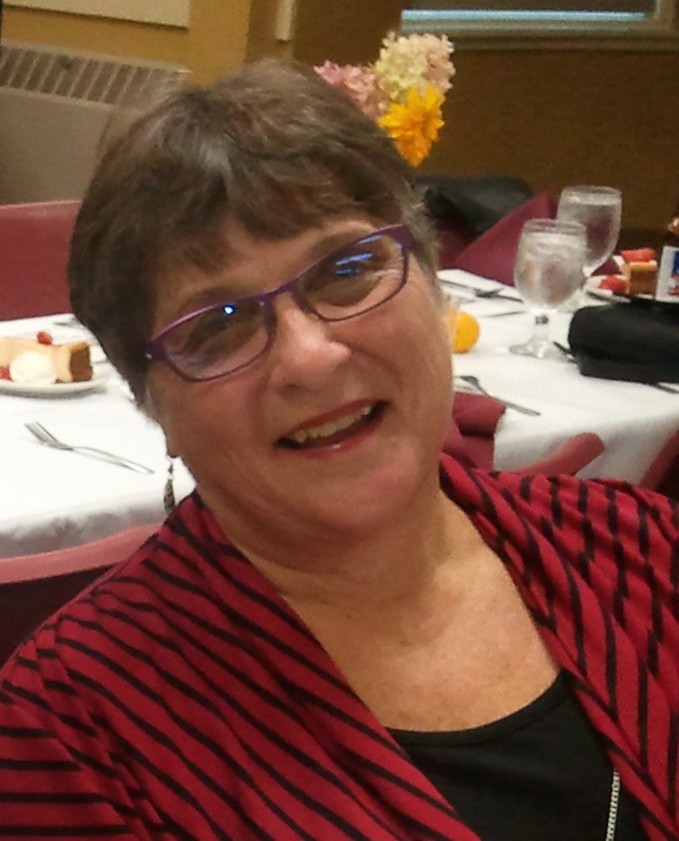Beginning Steps in Addressing DEI in a Math Classroom
by Pam Meader
So much has happened in so little time. First the COVID-19 pandemic hit and shortly after school buildings were closed and classes went virtual. Getting up to speed on the latest technologies and transforming face to face class lessons to virtual was a huge task for teachers. The killing of George Floyd followed, and our nation was ripped apart again over racial inequities. Teachers are grappling with how to make changes in their practice and classroom culture, to promote awareness of systemic racism and issues of inequality. It can feel overwhelming.
However, we cannot let ourselves to be so overcome by the enormity of these issues that we give in to inaction or hopelessness. In his now-famous “butterfly effect” principle of chaos theory, Edward Lorenz theorized that even a small variation in conditions, like whether or not a butterfly flaps its wings in an Amazonian rainforest, has the potential to later impact the course of something as powerful as a tornado in Texas. So it is with teaching. Small steps in the right direction help us gain momentum; this momentum energizes us, moves us forward, and ultimately can result in powerful change in ourselves and for our students.

As teachers, I believe there are two major things we can do to begin to address diversity, equality, and inclusion (DEI) in our classrooms. First, we all need to become informed of black, brown and indigenous histories — histories that were truncated, inaccurate, or altogether missing in the textbooks most of us read as children. I suggest reading some books on the history of suppression in our country or perhaps arranging a virtual book study and discussion group with colleagues. Two books that had a profound effect on me were How to Be an Antiracist by Ibram X. Kendi and Caste: The Origins of Our Discontents by Isabel Wilkerson. These books illuminate the backstory of the racism and inequality that persists in society to this day, challenge us to become aware of and examine our own biases, and make conscious choices on how to move forward in our thoughts and behavior.
That brings us to the second thing teachers can do: taking action by implementing changes in our classrooms. Small changes in lesson planning can begin to address DEI issues in the classroom. I have been watching many great webinars recently on this topic, and as I have, some themes have started to emerge for me. One is the idea of identity. Dr. Gholdy Muhammad, author of Cultivating Genius: An Equity Framework for Culturally and Historically Responsive Literacy, suggests thinking about how your instruction can help students learn about themselves and others that are different from them. She posits that if students see themselves in the curriculum, they are more motivated to learn.
Here’s an example of how this could look in a math classroom. When I taught at Portland Adult Education in Maine, my math classes were very diverse. Students from African countries and Asian countries were learning alongside students from the U.S. We always started our first day of class by learning where each student was born and by placing pins on a world map to display everyone’s country of origin. Then we would do interviews during which students would share information about their favorite foods, hobbies, interests, etc. We would then represent the data from the interviews as bar graphs and circle graphs. We’d also compose sentences using language like more than half, less than a quarter to talk about the data we collected. If new students joined the class, we would interview them, collect their data, and discuss how it would affect our graphs or our sentences.
There are several other areas where teachers can make changes to promote a culture of DEI. For example, in her recent STEM Forum on Equity and Inclusion talk Recognizing Student Brilliance, Faith Moynihan recounts asking herself what her students needed to be successful. She came up with four concepts. The first is that all students need to feel safe which means they need to feel valued and that their knowledge will be accepted. Safety in a math classroom is important especially to explore interesting problems, struggle with concepts, or share ideas in a group. If the brain does not feel safe, no new learning can occur (Jensen, 2005; Hammond, 2014). Starting classes with some group building, using a math autobiography to get to know your students better, and math journaling offer opportunities to build trust and safety in a classroom.
The second concept was utilizing interesting tasks for your students. Moynihan suggests thinking about what makes a task worthy of students’ time. What she discovered was that personal lessons were engaging lessons, which speaks to the “identity” factor that Dr. Goldy Muhammad talked about. In the words of researcher Emily Style (1988),“Education needs to enable the student to look through window frames in order to see the realities of others and into mirrors in order to see her/his own reality reflected.” For example, at the beginning of a course teachers could ask students what they hope to learn and why. What occupations are they seeking? What daily life challenges are they facing? Tailoring your math lessons to their pertinent needs and interests shows respect for the time and effort students are putting in to their education.
The third concept is creating opportunities for students to express their thinking in different and interesting ways. No longer is raising a hand in a math classroom enough. Teachers can utilize varied activities and tech tools such as group chats, journaling, number talks, online visualization and collaboration applications and more to promote communication. Moynihan herself reflected on a Desmos activity in which she could see that some of her student’s answers were not correct. Rather than just pointing out they were wrong, she asked them to explain their thinking and, in the process, this illuminated some deep thinking by her students. Developing metacognition (the awareness and understanding of one’s own thought processes) is a powerful tool for students and teachers alike.
Having students feel their thinking is valued is the last concept. Consider a time when your students came up with different answers to a problem. If you just give the correct answer to the problem, you are demonstrating that the focus is on getting the right answer and put no value on the thinking process involved in finding the answer. Those that got it right feel great, but you have left out many who could have shared their thinking. Those students instead feel their thinking is not valued or worse, that they can’t do math at all. What I have done in my classroom is group students by similar answers and then ask groups to defend their positions. As students listen, many change their minds or “critique the reasoning of others” (Common Core Math Practice 3).
A perfect example of this is the activity “My Favorite No”. First, the math teacher starts with a warm up and has students put their work on a notecard. She quickly sorts the correct answers from the wrong ones and picks a wrong answer to present as her “favorite no”. The students are asked to comment on what was done correctly in the problem. This affirms the value of the thinking of the student who provided that answer, who can then feel that while her answer might be wrong, she was awfully close to getting it right. This approach not only builds confidence, it helps students persevere in productive struggle.
The suggestions given here are small steps that could easily be adopted in a math classroom. Being in virtual classrooms makes this more challenging, but group talks could be designed using features like breakout rooms. Journaling can become a habit of mind and part of work to be shared with the teacher or colleagues using attachments in emails or shared cloud documents. The whole idea is to start to look at your class equitably, recognizing the various identities and brilliance each student can offer. As teachers we need to look inwardly and identify implicit biases we might hold and start to address these, recognizing that, in the words of Ibram K. Kendi, it might require “…a radical reorientation of our consciousness.”
References
Hammond, Z.L. (2014). Culturally Responsive Teaching and The Brain: Promoting Authentic Engagement and Rigor Among Culturally and Linguistically Diverse Students. Corwin Press.
Jensen, E. (2005). Teaching with the Brain in Mind, 2nd Edition. ASCD.
Kendi, I. X. (2019). How to Be an Antiracist. One World.
Lorenz, E. (2000). The Butterfly Effect. In R. Abraham & Y. Ueda (Eds.), The Chaos Advant-Garde: Memories of the Early Year of Chaos Theory (pp. 91-94). World Scientific. https://doi.org/10.1142/9789812386472_0007
Muhammad, G. (2019). Cultivating Genius: An Equity Framework for Culturally and Historically Responsive Literacy. Scholastic Teaching Resources.
Style, E. (1988). Curriculum as Window and Mirror. https://www.nationalseedproject.org/images/documents/Curriculum_As_Window_and_Mirror.pdf
Wilkerson, I. (2020). Caste: The Origins of Our Discontents. Random House.

Pam Meader, a former high school math teacher, has taught math in adult education for over 25 years. She is a math consultant for the SABES Mathematics and Adult Numeracy Curriculum & Instruction PD Center professional development initiative for Massachusetts. She helped co-develop Adults Reaching Algebra Readiness (AR)2 with Donna Curry. She is a national trainer for LINCS and ANI (Adult Numeracy Instruction). Pam enjoys sharing techniques for teaching math conceptually from Basic Math through Algebra and has co-authored the Hands On Math series for Walch Publishing in Portland, Maine.
